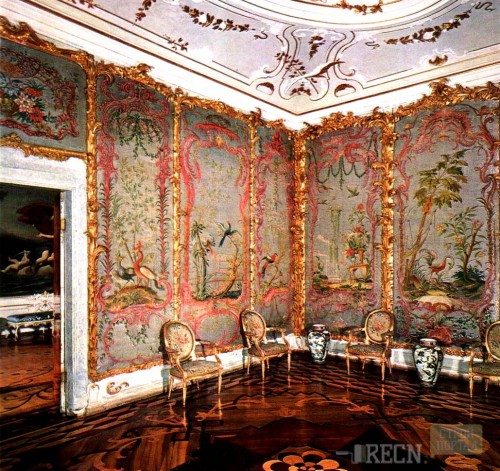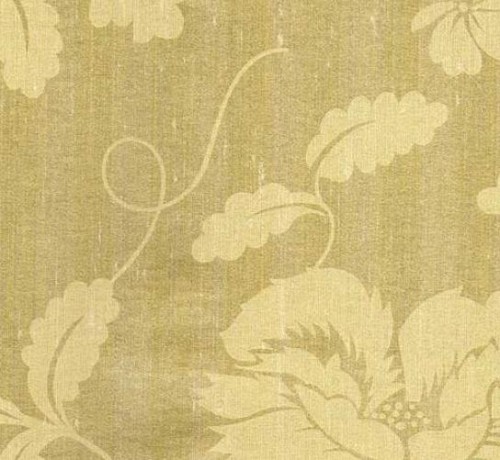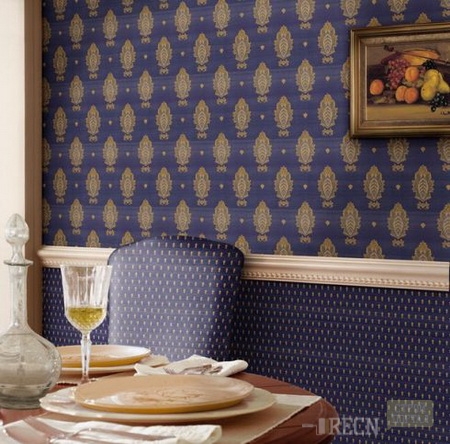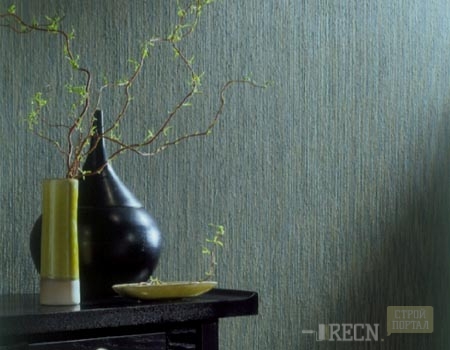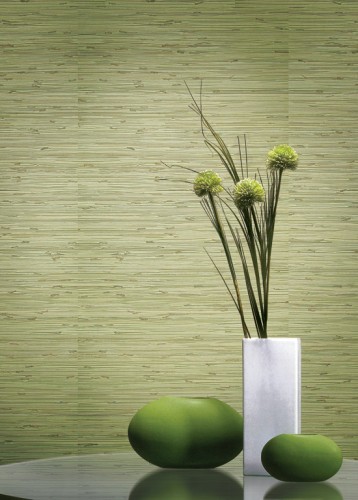
Fabric wallpapers for walls, features: advantages and disadvantages Wallpaper

Fabric wallpapers for walls are able to transform any, even the most expensive room. Stores offer a huge selection of textures and colors of textile wallpaper, but what do they actually represent? Consider the pros and cons of this popular material.
Content
History
Fabric wallpapers appeared long before the invention of modern paper analogues. Initially, pieces of matter used chunks for the walls of the walls, and only over time the wallpaper appeared on a tissue basis. The cloth finish was considered an indicator of wealth, both in the time of the kings and today.
The price of fabric wallpapers is sometimes confused by even the most decisive buyers, but the beauty they create, justifies all costs. Drapeting walls with cloth was used in ampir style, classicism, baroque and modern, and today fabric wallpapers are actively used even in eco-design.
Composition
Fabric wallpapers are the basis of paper or fliesline, on top of which the textile layer is applied. The basis can be passed as whole tissue, the same individual threads painted in the desired shade and glued together. Completely different materials can be used as textiles: jute, viscose, flax, polyester, etc. Depending on the nature of the tissue coating, the appearance of the wallpaper is changing, becoming more "soft", satin or purchasing completely unique features.
Specifications
Fabric wallpapers (photos) allow you to achieve the extraordinary beauty of the interior, to which you are not alone, even the most expensive, paper wallpaper. But, like all materials, textile wallpapers have their advantages and disadvantages.
Advantages
The very first advantage that is immediately striking and causes people around the world to buy fabric wallpaper, is their beauty. No photo is able to convey the unique atmosphere of the room decorated with textile wallpaper. They want to touch them, nice to look at them, in general, not wallpaper, but a continuous pleasure.
Environmental purity and naturalness of these wallpapers conquers modern adherents of a healthy lifestyle and defenders of nature. The fabric skips the air perfectly, allowing the wallpaper to "breathe" and preventing the occurrence of fungi and mold. Paints for wallpaper are non-toxic and comparable with paints on casual clothes, which has permanent contact with the body.
The high density of the tissue wallpaper allows you to perfectly absorb noise, so if you have walked walls, then not only a beautiful interior, but also additional noise insulation are obtained.
The density and composition of wallpapers provide good thermal insulation. This is especially noticeable in the cold season on the walls, not adjacent to other rooms.
And finally, linen wallpapers can boast a strong bactericidal effect. The room will be reliably protected from microbes, so such wallpaper is perfect for the nursery.
disadvantages
Along with the beauty of textile wallpapers, the first thing that the buyer notices is the price. Natural materials for interior decorations have always been expensive, therefore, not everyone can afford to afford the fabric wallpaper. The cost increases depending on the number of natural threads used in the production of wallpaper. More threads, therefore, denser and better material and more expensive.
If you bought high-quality and completely natural textile wallpapers without synthetic inserts, then prepare for the fact that they are quickly burned under the influence of direct sunlight. Therefore, you should consider lighting in a room with such wallpaper, providing or scattered light, or a good electrician.
Another point is difficult to call a disadvantage. The more in the wallpaper of natural threads and the more dense they fit together, the noticeable differences and irregularities in the invoice. Someone does not like it, and someone, on the contrary, considers it an indicator of naturalness and beauty. The case of taste, but the fact remains a fact.
Varieties of textile wallpaper
Linen
Based on linen wallpaper lies with a paper cloth coated with a layer of natural or mixed fibrous filaments. The surface of such wallpapers does not differ from conventional solid linen fabric and looks very beautiful and naturally. Linen wallpapers provide excellent heat and sound insulation, possess bactericidal properties.
Silk
Contrary to the seeming assumption, silk wallpapers are not made from silk at all. They consist of a layer of viscose on a paper basis. However, some silk is still present, but only as adding to the viscose layer. Thus, manufacturers achieve complete similarities with a real silk cloth. The advantages of this type of wallpaper is that they do not fade even from direct sunlight. Silk wallpapers will be an excellent solution for designing a work office, Bouire or bedroom.
Felt
Natural felt or propylene on a paper basis. Polypropylene is a foamed polyethylene, therefore this option is not very environmentally friendly, but more practical and convenient to operate than felt. Felt wallpapers are pleasant to the touch, soft, provide good heat and sound insulation. They serve for a long time and do not burn out in the sun. With the help of such wallpapers, you can easily hide small irregularities and wall defects. Felt wallpapers are well passed air and look quite effectively. But they have a small drawback - the accumulation of dust. If polypropylene wallpaper can be easily cleansed with a cleaning vacuum cleaner, then with natural felt wallpaper will have to be tinked. For them, only dry cleaning is suitable. Such wallpapers are suitable for the bedroom, living room or children, but in no case for the kitchen.
Jutety
Jute wallpapers are made on a paper basis, on top of which natural fabric is applied with the weave of linen threads. They differ long service life and perfectly mask the shortcomings of the walls. If you are looking for wallpapers for the kitchen, pay attention to this option, since the jute wallpapers are not collecting dust and do not absorb smells. Clean them easily and simply - manually or by a conventional vacuum cleaner.
Vellar
Paper base covered with a layer of polyvinyl chloride or bronze paint, which causes a drawing with adhesive dyes. During the production of velor wallpaper, the properties of the electrostatic field are used. When all layers are applied, the wallpaper is passed through a special installation, gluing charged electrostatic textile fibers to not dry paint. The surface of the material is dried at high temperature, and the result is a surface that simulates various embossed fabrics: tapestries, riveted velvet, etc.
"Japanese grass"
This is a special type of paper-based textile wallpapers. The interlacing of fiberglass and sage harnesses make it possible to achieve a unique natural effect. The peculiarity of such wallpapers in color impermanence - in one roll of tone can vary from light to darker, depending on the nature of the sage grass used. To achieve harmonious design, you need to measure and apply wallpaper walls to the wall. The cost of "Japanese grass" is a head, since the production of such wallpapers is very laborious. Despite the fact that the appearance of the wallpaper seems "fragile", in fact they are very durable and durable.
Jacquard
Jacquard wallpapers are a separate branch of textile wallpaper, which has more than 250 varieties. The peculiarity of some species is that the height of the roll can be up to 3 m. This allows you to literally "wrap up" a room in several techniques, getting rid of ugly connecting seams. Jacquard wallpapers are made on an acrylic basis, which guarantees the protection of the outer layer from impregnation with adhesive composition. Acrylic makes it easy to remove wallpaper from the wall or pull them down if necessary without damaging the cloth.
Features of textile wallpaper
Most varieties of tissue wallpapers actively absorb smells and collect dust, so it is better to glue them in bedrooms or living rooms. They are quite capricious and require constant care in the form of dry cleaning. Some wallpapers need to be protected from direct sunlight exposure.
If possible, it is better to buy textile wallpapers on phliselin, and not on a paper basis. This will avoid strain during sticking and drying. In addition, the phlizelin wallpaper is much stronger and will serve much longer. Independent putting fabric wallpaper - risky lesson. Therefore, if you are not sure about your abilities, it is better to be restrained and entrust work to professionals. Moreover, given the cost of such beauty, it is better not to experiment.




